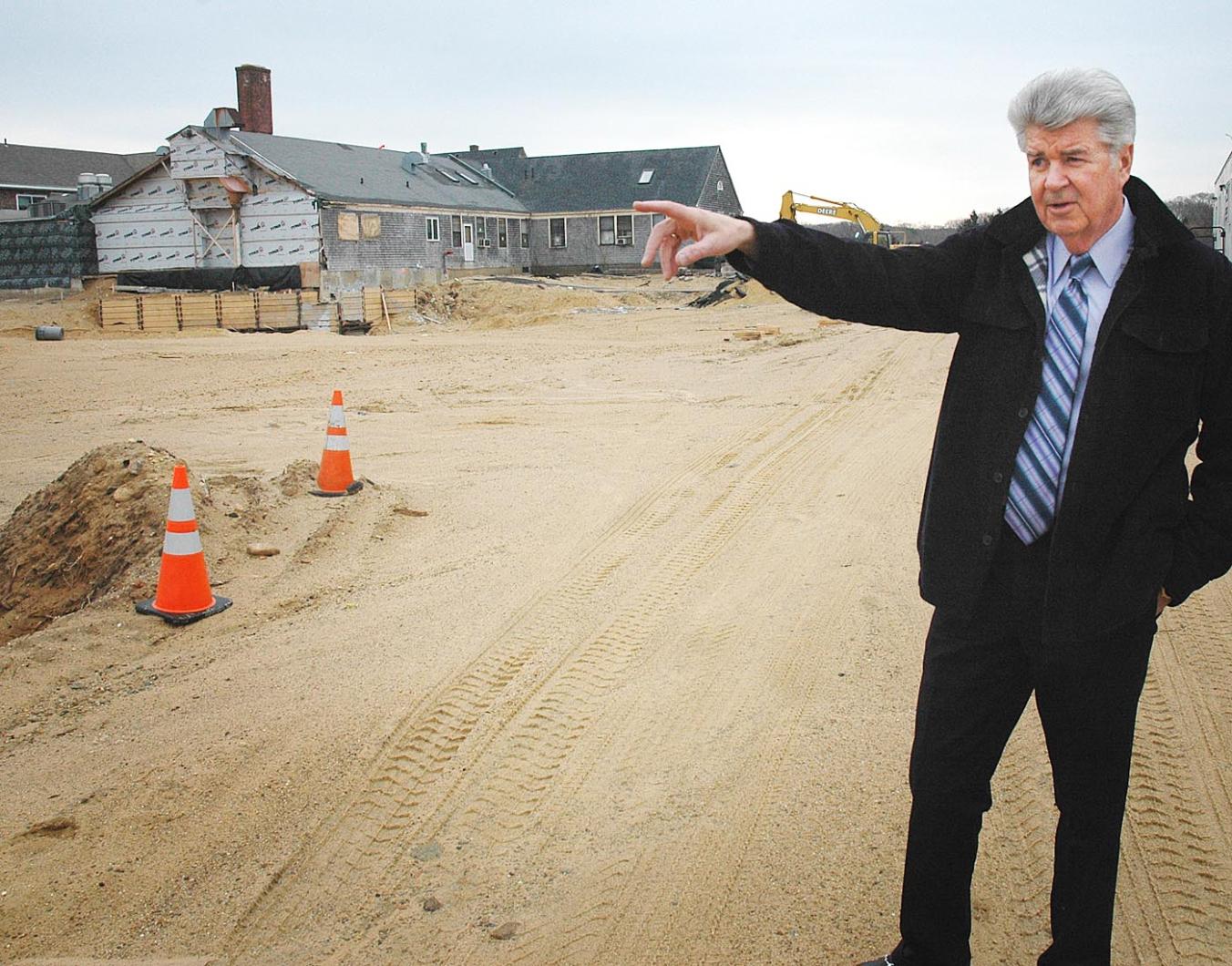The Martha’s Vineyard Hospital is ready to pour the foundation for construction of its 90,000-square-foot expansion.
The site has undergone nearly six months of preparation for the construction, a project for which more than $46 million has been raised.
The expansion is on schedule for completion in late 2009.
The project aims to renovate, expand and replace the 1972 hospital with a state-of-the-art facility. The proposal would increase the number of hospital beds from 15 to 30, including intensive care and maternity beds, and would house all of the inpatient rooms and emergency and surgical services in a new two-story addition.
The facade of the original 1929 cottage hospital building has been demolished, and the 1972 wing will be renovated to house physician, rehabilitation and administrative offices.
The project time line calls for Goodale Construction Co. of Vineyard Haven to begin pouring a partial 8,000-square-foot foundation required to support construction before general contractor Columbia Construction Co. of Reading begins installation of the structural steel frame in April.
“[Three] weeks ago we completed installation and compaction of 11 million tons of fill on the site footprint and the grade is back to the elevation level at which we began (before filling and compacting),” said Cornelius (Connie) Bulman, the hospital’s project clerk of the works and director of general services.
Soil beneath the new hospital foundation was stabilized with a high-tech process called vibrocompaction that has never been used on the Island before. Crews sent a huge steel probe that induces vibrations as far as 40 feet into the earth, helping to increase the density of the soil.
The new hospital ground floor will lie about 17 1/2 feet above sea level, six inches higher than the existing hospital lobby, according to plans.
“We are pretty much on schedule and I don’t see anything major that would affect meeting our completion date of late 2009,” Mr. Bulman said. “If there are problems, they usually show up during the site preparation stage.”
The hospital has awarded bids for concrete, steel, plumbing and for an elevator.
Site preparation to date has included construction of a new entrance roadway, demolition and decommissioning of the facility’s wastewater system, tying in to the Oak Bluffs sewer system and removal of the public parking lot to a new area behind the planned building.
As foundation work begins in April, the most significant change for users will be that driving access to a public parking lot will be via Eastville avenue rather than from Beach Road.
A new building entrance from the new parking area has been created between the Windemere Nursing and Rehabilitation Center and current patient care rooms. The entrance connects to the main lobby near the chapel.
Access to the emergency room and its parking lot will not be affected by the construction work.
The helicopter landing pad used for evacuation flights to off Island medical facilities has been discontinued until the project is completed. The helipad at Martha’s Vineyard Airport will be used for patient transport in the interim, according to Rachel Vanderhoop, director of development.
The hospital Web site includes a detailed map of the campus that will be updated frequently, Ms. Vanderhoop noted.
The hospital has hired an engineer to ensure the construction meets specifications.
Mr. Bulman said: “Typically, the general contractor hires the engineer, but I believe the engineer should work for the hospital and reflect our perspective.”
Noting that a 1974 expansion project created a building that is very difficult to heat and cool effectively, Mr. Bulman said both staff and vendors will be trained to use the system to manage the environment effectively.
He began working on the Island hospital project last fall after 43 years with Caritas Carney Hospital in Boston where he had most recently been chief operating officer and interim president, overseeing both construction projects and hospital administration. The Plymouth resident commutes via the 6 a.m. and 5 p.m. Patriot ferry boat daily.
Mr. Bulman sees his role primarily as a patient advocate.
“I began [my career] in housekeeping and worked my way up so that’s my perspective. I ask myself every step of the way: ‘How will this decision affect our patients?’”
He added that an example of patient-first mentality is a plan to have a golf cart manned by a staff member to transport patients from the parking lot to the entrance.
Mr. Bulman was recruited for the project by Tim Walsh, hospital chief executive officer, who worked with Mr. Bulman at Caritas Carney Hospital in Boston for 17 years. Mr. Walsh had been Caritas Carney’s chief financial officer before joining Martha’s Vineyard Hospital in 2000 in the same role.
He was elected chief executive officer in 2002 and subsequently helped to negotiate a transfer of ownership of the hospital to Massachusetts General Hospital, the major subsidiary of Partners, now the largest hospital group in the state.
At Caritas Carney, Mr. Walsh and Mr. Bulman worked on a variety of initiatives, including construction projects and conversion of the then-independent Carney hospital into a member of the Caritas Christi Health Care system.







Comments
Comment policy »